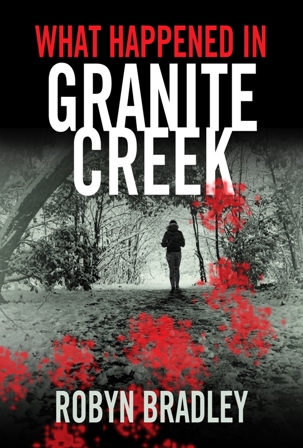Oh, it’s time for some fun! And giveaways! And crazy! Because, let’s face it: we all love a little crazy sometimes, right?
Right?!?
I’m all sorts of excited for my new novel, What Happened in Granite Creek, which comes out in less than a month.
To celebrate the pre-launch, I’m holding a happy little contest on this here blog…and helping out one of my favorite charities, Smile Train, while I’m at it.
Help me celebrate, won’t you?
Here’s how to play:
What do YOU think happened in Granite Creek, my fictional town in New Hampshire? I want crazy, outlandish comments, people! Maybe aliens landed. Maybe Dick Cheney penned his memoir there. Maybe aliens took over Dick Cheney’s body while in Granite Creek and turned him into…wait for it…Michele Bachmann! Let your imagination run wild, have some fun, keep it PG-13,and leave what you think happened in Granite Creek in the comments below.
Then what?
For every legitimate comment I get (no spam links, thanks), I’ll donate $2 (in honor of this being my second novel) to Smile Train (up to $500, which would cover TWO surgeries — I’d be psyched to get 250 legit comments, so have it and spread the word!).
On or about October 4, I’ll choose the most inventive comment and declare a winner. The winner will receive his or her choice of:
- An ePub or Mobi file of What Happened in Granite Creek OR a signed paperback
- AND a $50 electronic gift certificate to either Amazon.com or B&N.com
And then, I’ll tally up the comments and make my donation to Smile Train! Win all around!
Terms and stuff:
Anyone 13 or older can enter.
Winner must have a valid email address (which should be included with your comment) in order to receive the e-gift certificate to Amazon.com or B&N.com and the electronic file of the book. If winner opts for paperback, he or she must also provide a valid snail mail address.
Entries are being accepted now (approximately 7:00 AM EDT on 9/27/11) through midnight on 10/3/11.
Winner will be announced on, around, or in the same century as 10/4/11.
You can enter up to three (3) times (by leaving three different comments, which also counts as $6 for Smile Train!).
Void where prohibited.
My family may enter, but anyone with the last name “Bradley” (who is legitimately related to me) will be ineligible to receive the grand prize; however, your comment will count toward the money raised for Smile Train.
All decisions by the judge (me, me, me!) are final.
All entrants will receive an email newsletter from me (via Constant Contact) announcing the official launch of my book. But I won’t email you after that, unless you sign up for my newsletter on your own.
These rules, terms, and dates are subject to change at any time and for any reason without notice, because that’s what will happen should George Clooney drop his latest dancing babe and show up on my doorstep instead.
If the winner opts for the paperback, the wait might be a month or more, depending on when the paperback is finalized. The electronic file will likely be delivered right away, but this could change depending on tech issues. Ditto with the e-card for Amazon or B&N.com.
I’m not responsible for tech glitches, problems with submitting comments, computer issues, the national debt, Donald Trump’s hair, or any other issues remotely related to this contest.
What now?
Submit a comment below!
Tell people about it.
- Here’s a tweet (copy and paste — it’s fewer than 140 characters as is): What do YOU think happened in Granite Creek? Share the crazy here & help Smile Train while you’re at it: http://bit.ly/n9fRqP #WHIGC
- Here’s a Facebook status update (copy and paste): Help author Robyn Bradley raise money for Smile Train…and possibly win some fun swag while you’re at it. Leave a creative comment on her blog about what YOU think happened in Granite Creek, the fictional town in Robyn’s upcoming novel: http://www.robynbradley.com/what-do-you-think-happened-in-granite-creek
Have fun! And, as always, thanks so much for your support!
xoxo
Questions? Email me robyn@robynbradley.com





















































 finished the first draft in the spring of 2010. I did a little work here and there through July 2010. Then, I didn’t touch it again until March 2011, which was when I revised and took a hard look at everything. It went off to my beta readers in June 2011. With their feedback, I revised the final draft in July and August 2011 and fit in some last-minute research that came about in an unexpected manner (more on this in another post). And here we are today with the final version: from “Support Our Troops” to What Happened in Granite Creek.
finished the first draft in the spring of 2010. I did a little work here and there through July 2010. Then, I didn’t touch it again until March 2011, which was when I revised and took a hard look at everything. It went off to my beta readers in June 2011. With their feedback, I revised the final draft in July and August 2011 and fit in some last-minute research that came about in an unexpected manner (more on this in another post). And here we are today with the final version: from “Support Our Troops” to What Happened in Granite Creek.


















































